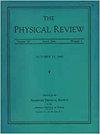Optimal work fluctuations for finite-time and weak processes
引用次数: 0
Abstract
The optimal protocols for the irreversible work achieve their maximum usefulness if their work fluctuations are the smallest ones. In this work, for classical and isothermal processes subjected to finite-time and weak drivings, I show that the optimal protocol for the irreversible work is the same for the variance of work. This conclusion is based on the fluctuation-dissipation relation $\overline{W}=\mathrm{\ensuremath{\Delta}}F+\ensuremath{\beta}{\ensuremath{\sigma}}_{W}^{2}/2$, extended now to finite-time and weak drivings. To illustrate it, I analyze a white-noise overdamped Brownian motion subjected to an anharmonic stiffening trap for fast processes. By contrast with the already known results in the literature for classical systems, the linear-response theory approach of the work probabilistic distribution is not a Gaussian reduction.有限时间弱过程的最优功波动
对于不可逆工作的最优协议,当其工作波动最小时,其可用性最大。在这项工作中,对于受有限时间和弱驱动的经典和等温过程,我表明不可逆工作的最佳协议与工作方差相同。这个结论是基于波动耗散关系$\overline{W}=\mathrm{\ensuremath{\Delta}}F+\ensuremath{\beta}{\ensuremath{\sigma}}_{W}^{2}/2$,现在推广到有限时间和弱驱动。为了说明这一点,我分析了一个白噪声过阻尼的布朗运动,该运动受到快速过程的非谐波强化陷阱的影响。与文献中已知的经典系统的结果相比,功概率分布的线性响应理论方法不是高斯约简。
本文章由计算机程序翻译,如有差异,请以英文原文为准。
求助全文
约1分钟内获得全文
求助全文

 求助内容:
求助内容: 应助结果提醒方式:
应助结果提醒方式:


